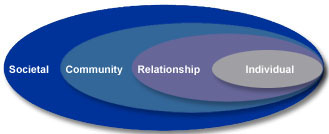Common Indicators of Social-Emotional Well-being in Early Childhood
The social and emotional well-being of young children is an important goal for many federal, state, and private initiatives. However, the early childhood field has lacked consensus on indicators of healthy social emotional development in early childhood.
Recognizing the opportunity to identify and align measurement strategies across initiatives and organizations, the Substance Abuse and Mental Health Services Administration’s (SAMHSA’s) Project LAUNCH (Linking Actions for Unmet Needs in Children’s Health) leadership developed a partnership with Child Trends in 2015. The goal of the partnership was to identify a set of common indicators of social-emotional well-being in early childhood (birth to age 8).
Together, Project LAUNCH and Child Trends developed a set of 130 common indicators based on: (1) scientific evidence; and (2) shared use across a number of national initiatives. These Common Indicators reflect an ecological perspective in which child development is understood to be the product of complex transactions between children and their environments.
The Social-Ecological Model: A Framework for Prevention

Source: National Center for Injury Prevention and Control, Division of Violence Prevention (2018)
Piloting the Common Indicators
Project LAUNCH Expansion Grantees are currently piloting a subset of these 130 indicators. Our vision is that other initiatives will consider adopting some of these indicators as well, with the ultimate goal of:
- Facilitating a shared approach to measuring social-emotional well-being in early childhood;
- Reducing burden on families, communities, and grantees by eliminating redundancies in reporting across initiatives; and
- Providing a mechanism for assessing collective impact (i.e., the commitment of a group to solving a social problem through a shared agenda, measurement, mutually reinforcing activities, and continuous communication).

Resources
Click on each of the resources below that demonstrate our work to-date, laying the foundation for future efforts.
- Common Indicators of Social and Emotional Well-Being in Early Childhood Summary Brief: This brief describes the process of developing the common indicators, the resulting products, and next steps for the field.
- Common Indicators for Early Childhood Social and Emotional Well-being: This document provides the full list of 130 Common Indicators. The indicators are matched to: (1) potential levels/audiences (“Indicator Levels”), including child, family, provider/program, community, and state/tribal; and (2) corresponding indicators from other relevant early childhood initiatives.
- Common Indicators for Early Childhood Social and Emotional Well-being AT-A-GLANCE: This document lists the 130 common indicators in brief format.
- Examples of Operationalized Common Indicators: This document presents a subset of the 130 Common Indicators that have been operationalized to enable multiple individuals/sites to use each indicator in a consistent way. The operationalized indicators include a definition of each indicator, as well as the numerator and the denominator. Readers can use these examples to inform how they approach using other indicators that have not yet been operationalized.
- Worksheet on Common Indicators of Social and Emotional Well-being in Early Childhood (Click to download Word document): This worksheet provides guidance for selecting and operationalizing the Common Indicators for a specific project or initiative.
Contact & Disclaimer
SAMHSA Project LAUNCH Project Officers supporting this project were Yanique Edmond and Jennifer Oppenheim. If you have questions about this work, please contact Child Trends project leader Kristen Darling at kdarling@childtrends.org. We welcome your interest in funding, developing, and/or piloting this content in your community or initiative!
This webpage is operated and maintained by Child Trends and is supported under contract number 283-12-6101 from the Substance Abuse and Mental Health Services Administration (SAMHSA). The content of this website does not necessarily reflect the views or policies of SAMHSA.

© Copyright 2024 ChildTrendsPrivacy Statement
Newsletter SignupLinkedInThreadsYouTube